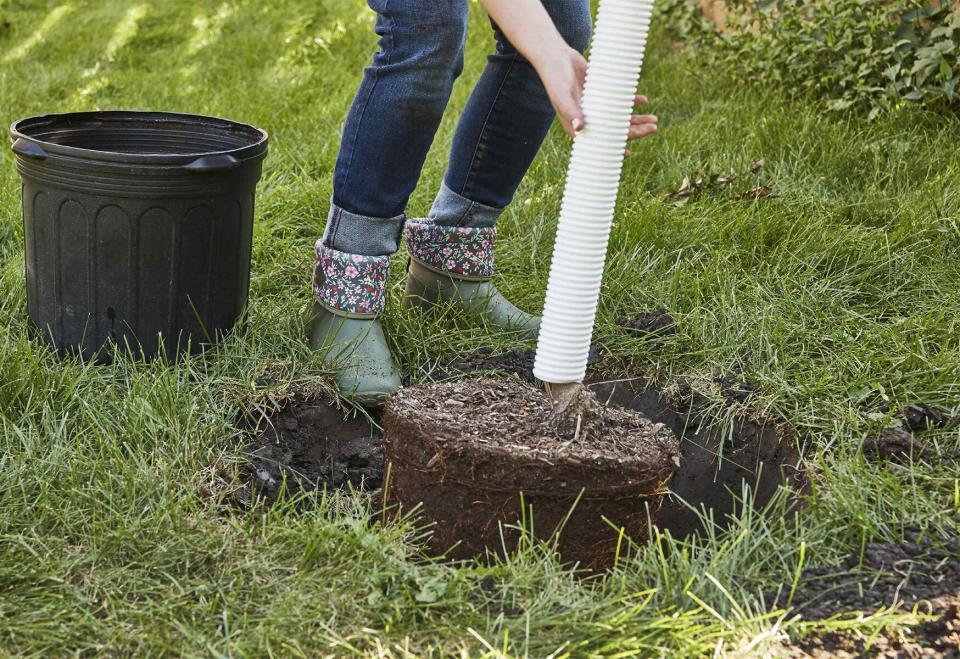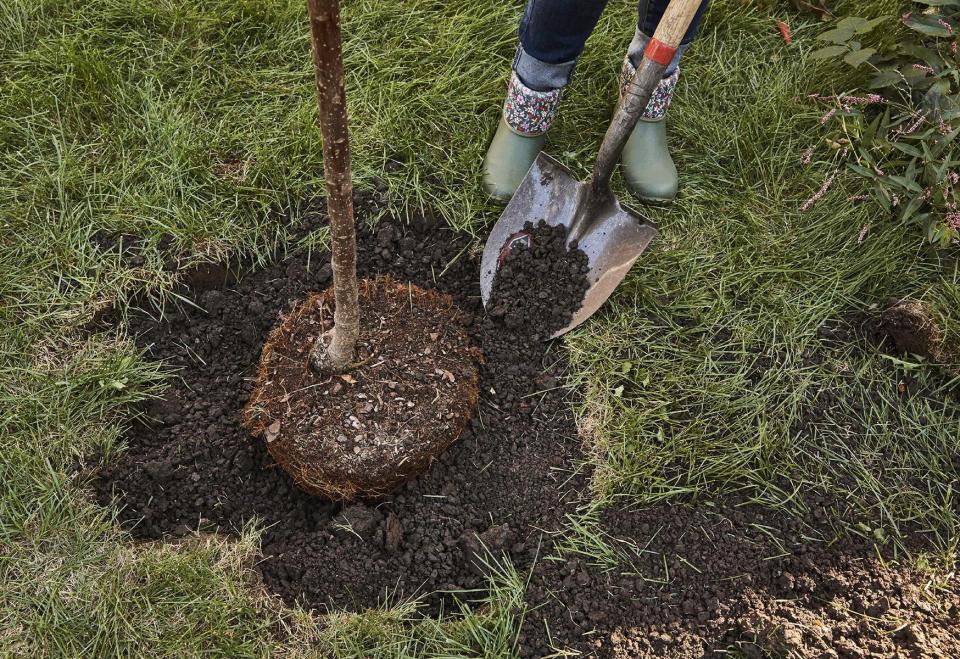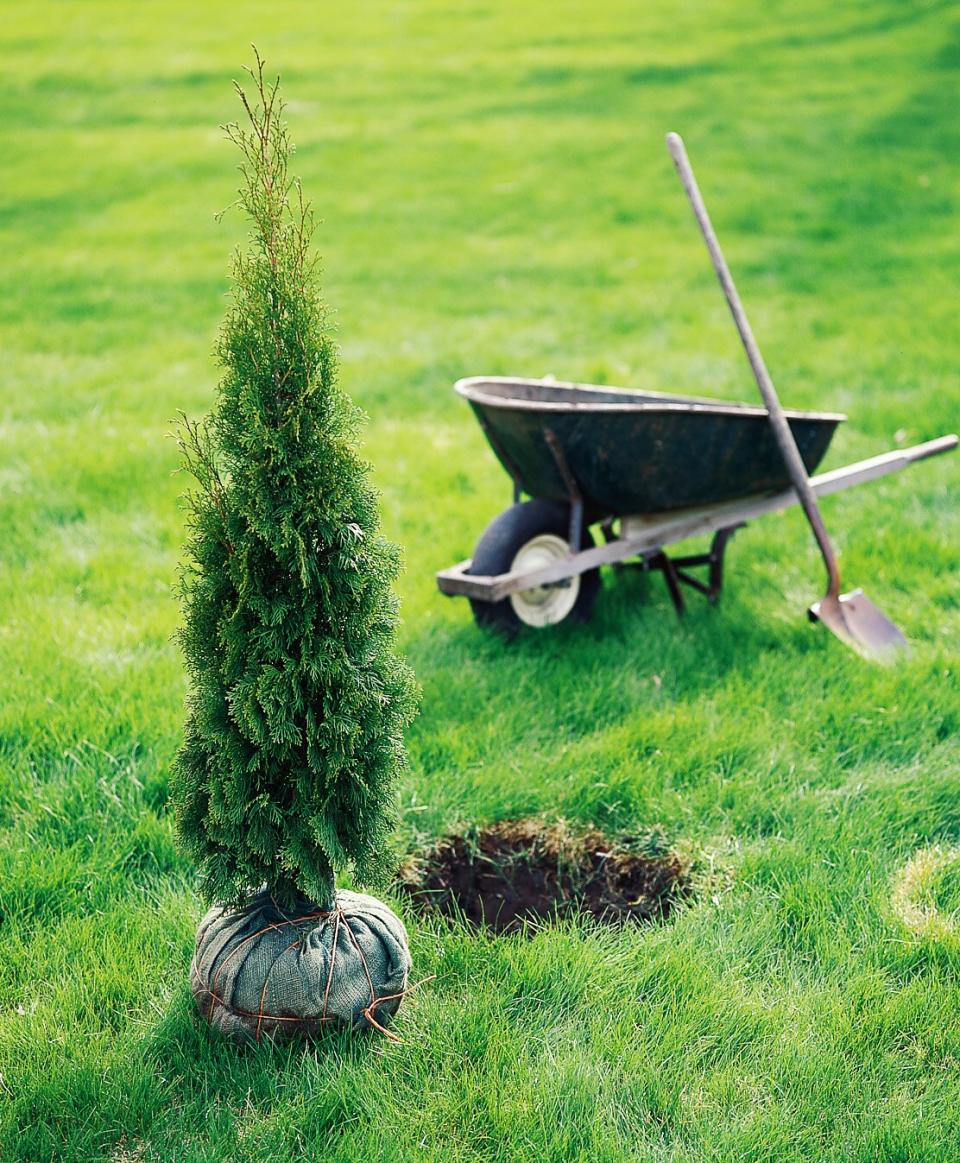How to Plant a New Tree in Your Yard

After you have researched and selected the best tree to plant in your yard, it's time to get it in the ground. Digging the right-size planting hole is the key to getting your new tree off to a good start, but there are a few other factors in play, too, such as timing. Fall is the best time to do your digging. That's because hot summer temperatures can stress new plants, especially if they don't get much rain. Planting in autumn gives them a little extra time to establish themselves before warm weather arrives again the following year. Adding a new tree to your yard can add beauty and value to your home so use these tips to get planting.


How to Dig a Hole for a Tree
First, prepare a hole two to three times as wide as the root ball of your tree. Dig down to about the depth of the root ball so that when it's resting on the bottom of the hole, the tree is at the same level with the ground as it was in its container. Handle the root ball carefully to keep it intact while you place it in the hole. Once it's in, turn it so the best side of the tree is facing the direction you want. With burlapped root balls, cut the twine and remove the burlap (or at least push it to the bottom of the hole).
Test Garden Tip: Plant small trees (that reach 30 feet tall or less) at least 10 feet from your home's foundation and utility lines. Plant large trees (30 to 70 feet tall) at least 15 feet from foundations and lines; give 70-foot trees 20 feet of distance.

Blaine Moats
Backfill Soil into the Hole
Return the soil you dug out of the hole, adding it evenly around the root ball and lightly packing down the soil as you go. Frequently check the trunk to ensure that it's straight. Use leftover soil as a berm to create a watering well.
You may have heard that you should amend backfill with organic matter like compost, but this is an older practice. Several studies have shown that it produces little benefit (as long as the existing soil is of reasonable quality), so many experts no longer recommend it. Similarly, fertilizer doesn't offer many benefits at planting time, and can even be harmful. Wait until the following year, then provide a moderate dose of fertilizer. The most important factor, by far, is loose soil that new roots can easily grow into. That's why a wide planting hole is so vital.

Blaine Moats Use a zip tie or twine to secure the stake loosely to the tree.
Install Tree Stakes
Drive the stake into the ground underneath and through the root ball. The stake should be tied loosely to the trunk; don't lash it too tight so the trunk can't flex in the wind. Large trees may need two or three stakes placed several feet from the trunk. After six months, enough roots will have grown in to hold the tree in place so you should remove all stakes to allow the tree to continue growing naturally.

Blaine Moats Watering around a newly planted tree helps settle the soil around it so it makes good contact with the roots.
Watering a Newly Planted Tree
Water the tree right after planting and keep the soil around it moist for several weeks afterward. By that point, the roots will have begun to grow out into the surrounding soil, and you can begin to gradually reduce the frequency of watering. A 3-inch layer of mulch around the base of the tree but not touching the trunk will keep weeds out and reduce water loss.
Test Garden Tip: Newly planted trees should only be pruned to remove broken, dead, or diseased limbs. Otherwise, leave them be until after their first growing season.

Lark Smothermon
How Much is My Tree Worth?
Every tree you plant in your yard, whether deciduous or evergreen, adds so many benefits for wildlife and the environment in general, not to mention your own enjoyment. But trees also add financial value to your entire property, which is a nice perk to investing in them in the first place. Four factors affect determining a tree's value:
Size: This includes the tree's height, width, and measurement of a trunk's girth. The value of a mature oak on an established property can exceed $20,000.
Species: Trees are valued for their hardiness, adaptability, sturdiness, attractiveness, and low-maintenance care requirements. The most highly valued trees today are those that provide shade, ornamentation (such as spring flowers or fall color), and drought tolerance. A local arborist and county extension service can identify the best and most valuable trees for your landscape.
Condition: Consult an arborist who can determine a tree's condition by inspecting its trunk, branches, bark, buds, and roots.
Location: A tree that stands alone, shades a house, or flanks a street may carry more value.

